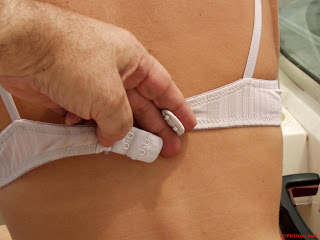How to instantly detect a lie by analyzing someone’s voice & words
Categories:
Detect Deceit
» on Sunday, June 19, 2011
Have you ever been having a conversation with someone, say, in the office, at home or out-and-about and doubted the truthfulness of something they’ve said? If you’re like most people, you no doubt have. It’s a frustrating position to be in. Even though you might suspect one or more of their statements to be false, you have no proof and can’t really risk accusing them for fear of being wrong, upsetting them and making a really bad impression.
But what about if you aren’t with them face-to-face and talking on the phone instead or even listening to a message they’ve left you on your answering machine? Your job, of accurately judging whether or not what they’re saying is the truth or a lie is made even harder. You can’t look at their eyes, view their body language or use any other visual clue to help you decide on whether or not they’re trustworthy.
So what CAN you do? Well, you can use natural lie detection techniques to get a good grasp on what they’re saying and, most importantly, whether it’s been made-up, twisted or is the entire truth. Let’s look at 4 ways in which people alter or change the way they speak or the words they use when they lie to you. Listen out for each one whenever you want to tell if someone is lying to you, either over the phone or face-to-face.
Sign #1: NEGATIVITY. Liars know that when they try to deceive someone they’re breaking an unspoken moral and social code – lying, to any normal, decent person – is plain wrong 99% of the time. Because what they’re saying is negative, they themselves feel a sense of negativity and cynicism, which leaks out in the words they choose to use. For example, a liar might say: ““I wasn’t there when the fire started,” instead of, “I was at home when the fire broke out.” Or “I never tell lies,” instead of, “I always tell the truth.”
Sign #2: SELF-REFERENCING. When trying to deceive others, people frequently want to psychologically distance themselves from the lie or lies they’re telling. They often do this by decreasing the amount of times they use self-referencing. For example, they might say: “That car was in the driveway. God knows how it could cause an accident at the same time.” An honest person is much more likely to not worry about referencing themselves in their statement, and might instead say: “My car was parked in my driveway. I don’t know how it could possibly have been on the road and caused an accident at the same time.”
Sign #3: VERBAL DISCLAIMERS. There’s a type of verbal deceit signal that many liars use that actually occurs before they tell you a lie, rather than during or after. They are called verbal disclaimers. They consist of sentences that precede a lie, which ‘prep’ the person who’s about to be deceived in an attempt to lessen the chance of them suspecting dishonesty or becoming suspicious of the liar’s claims. For example, saying things like: “I know you probably won’t believe this…” And “I can assure you…”
Sign #4: SPEECH SPEED. Because of the complicated mental task of constructing a lie and the equally tricky task of expressing it in words convincingly, liars often unknowingly slow down their speech speed to help their brains cope. As well as slowing down the speed at which they talk to give themselves extra time to think up what they’re going to next, liars also do it because they know that speaking more slowly gives their statements more weight. It also allows the person or people listening to take in everything the liar’s saying, which decreases the chances of them asking further questions, thereby lessening the chance of the liar being caught out.
There you have it: 4 verbal signs you can spot to ascertain whether or not someone is lying to you. The great thing about knowing these 4 signs, and the dozens of other signs and pieces of info we haven’t covered here, is that 99.999% of people HAVE NEVER HEARD OF THEM and cannot therefore try to avoid exhibiting them to keep up their con.
Download Detect Deceit



0 Responses to “How to instantly detect a lie by analyzing someone’s voice & words”: